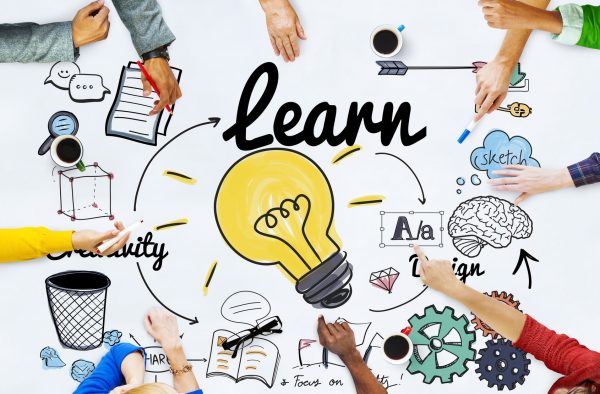Written by: developervsandhu
Personal Development
Mastering Learning with the Laser Method
Learning is a lifelong journey, and while the destination may vary, the path often gets clouded by distractions, ineffective strategies, or even a lack of purpose. To help clear the path and make learning more impactful, we have the Laser Method, a simple yet powerful approach that structures the learning process in a way that ensures better understanding, retention, and application of knowledge.
The Laser Method can be broken down into five key steps:
- L = Lock In
- A = Absorb
- S = Synthesis
- E = Express
- R = Review
Let’s walk through each step in detail and see how it transforms learning into a meaningful experience.
1. L = Lock In: Finding Your Why
Before you dive into any learning process, ask yourself "Why am I learning this?" This is the core of the Lock In phase—finding the purpose behind your learning. If you don’t have a clear reason, learning can feel like a chore. When you "lock in," you're essentially identifying what drives you to learn, making it easier to stay motivated, focused, and engaged.
- Example: If you’re learning a new programming language, think about how mastering it will help you get a better job, create your dream project, or solve a problem you’ve been struggling with. This “why” acts as a mental anchor, pulling you toward your goal when you feel like giving up.
2. A = Absorb: Taking in Information
Now that you’ve locked in on your "why," it’s time to Absorb information. This phase is where the intake of knowledge happens. You can absorb information through reading, watching videos, attending lectures, or practicing hands-on tasks.
- Tip: Find your best method for absorption. Some people are visual learners, while others might absorb better by listening or through interaction. Adapt the resources that fit your style.
Absorbing isn’t just about cramming; it’s about understanding and engaging with the material, which means being curious, asking questions, and making connections to real-life experiences.
3. S = Synthesis: Relating and Retaining
The Synthesis phase is where real learning happens. It's not just about remembering information but relating it to something meaningful in your life. Synthesis is about asking yourself: “How is this beneficial to me?” and “How can I apply it?”
- Tip: Make connections. If you’re learning a historical event, ask yourself how it shaped the present world or your community. If you’re studying a scientific concept, relate it to something in your daily life—like how physics explains the movement of objects you use every day.
When you synthesize, you organize the information in a way that makes sense to you, leading to better retention and understanding.
4. E = Express: The Power of Teaching and Feedback
The Express step revolves around four key actions:
- Choose a concept to learn.
- Teach it to someone.
- Identify knowledge gaps.
- Go back to your notes and review them.
Teaching is one of the most effective ways to solidify your understanding. When you explain a topic to someone else, you simplify complex ideas and identify any gaps in your own knowledge. The gaps become obvious when you struggle to explain a concept clearly. Once you find these gaps, go back to your notes, reread, and fill in the missing pieces.
- Tip: You don’t need a classroom for this—teach a friend, family member, or even an imaginary audience! The point is to verbalize and clarify your understanding.
5. R = Review: The Key to Long-Term Retention
No matter how well you absorb, synthesize, or express information, if you don’t Review it regularly, it will fade over time. This is where the Forgetting Curve comes into play.
The Forgetting Curve, developed by psychologist Hermann Ebbinghaus, shows how quickly we forget information if we don’t review it. The curve indicates that without reinforcement, you can lose up to 70% of what you’ve learned within 24 hours!
- Solution: The way to combat the Forgetting Curve is through spaced repetition. Review your material at increasing intervals—after one day, a week, a month, etc. Each time you review, your brain strengthens the memory, and over time, you retain more.
Real-Life Application of the Laser Method
Let’s imagine you’re learning a new skill—say, photography.
- Lock In: Why are you learning photography? Maybe you want to capture beautiful moments on your travels, or you’re considering a career in photography.
- Absorb: Watch tutorials, read guides, and practice with your camera.
- Synthesis: Think about how photography can enhance your travel experiences or help you express your creative side.
- Express: Teach the basics of photography to a friend. While explaining, you might realize you’re unsure about the exposure triangle. That’s a knowledge gap to fill.
- Review: After a week, revisit your notes on camera settings and composition, and practice again. Keep reviewing every so often to reinforce your skills.
Conclusion
The Laser Method is a practical framework that transforms passive learning into an active, meaningful experience. By Locking In on your "why," Absorbing relevant information, Synthesizing it into your life, Expressing your understanding through teaching, and Reviewing to ensure long-term retention, you become a more effective learner.
In a world full of distractions and endless information, the Laser Method helps you stay focused and learn with purpose. Whether you're picking up a new skill, studying for an exam, or pursuing a passion, this method can guide you toward mastery.
Ready to try the Laser Method? Start by Locking In on your next learning goal, and let the journey begin!
Login To Add Comment
No comments yet.
